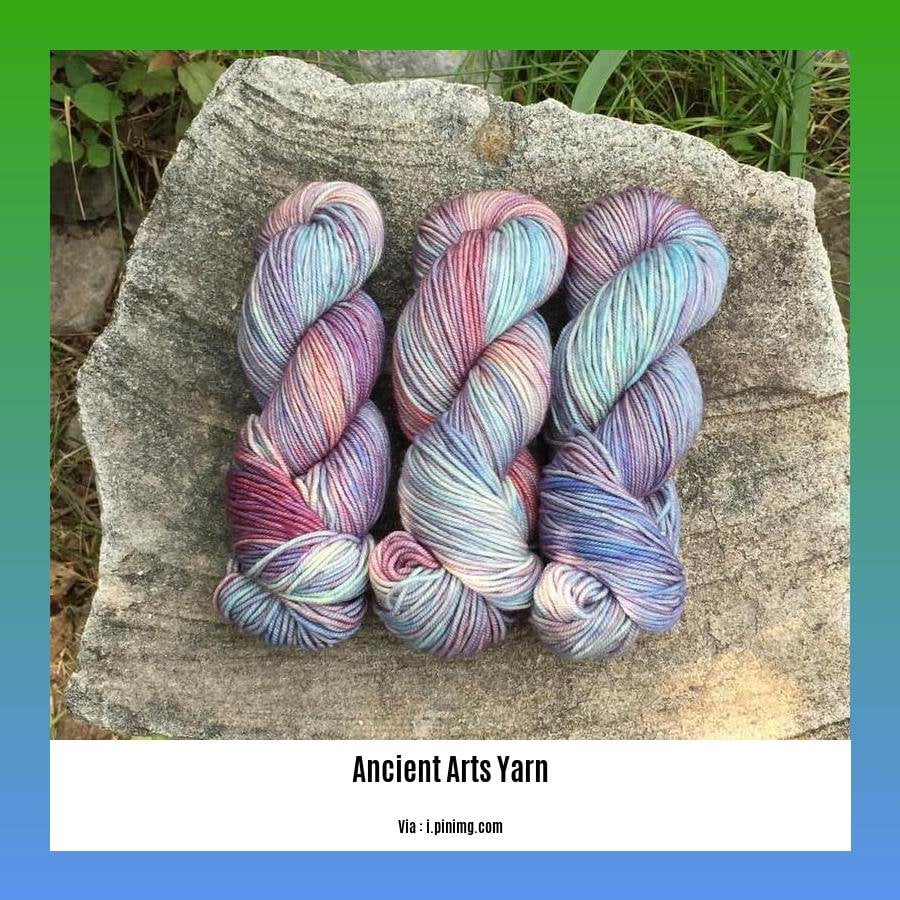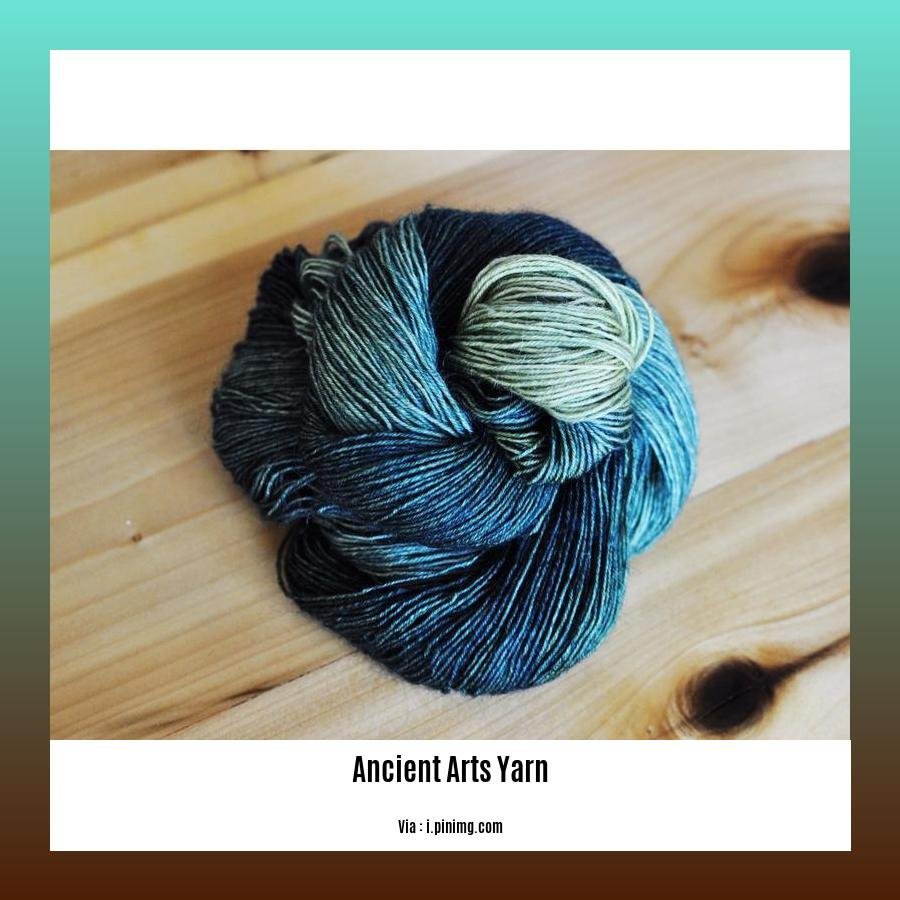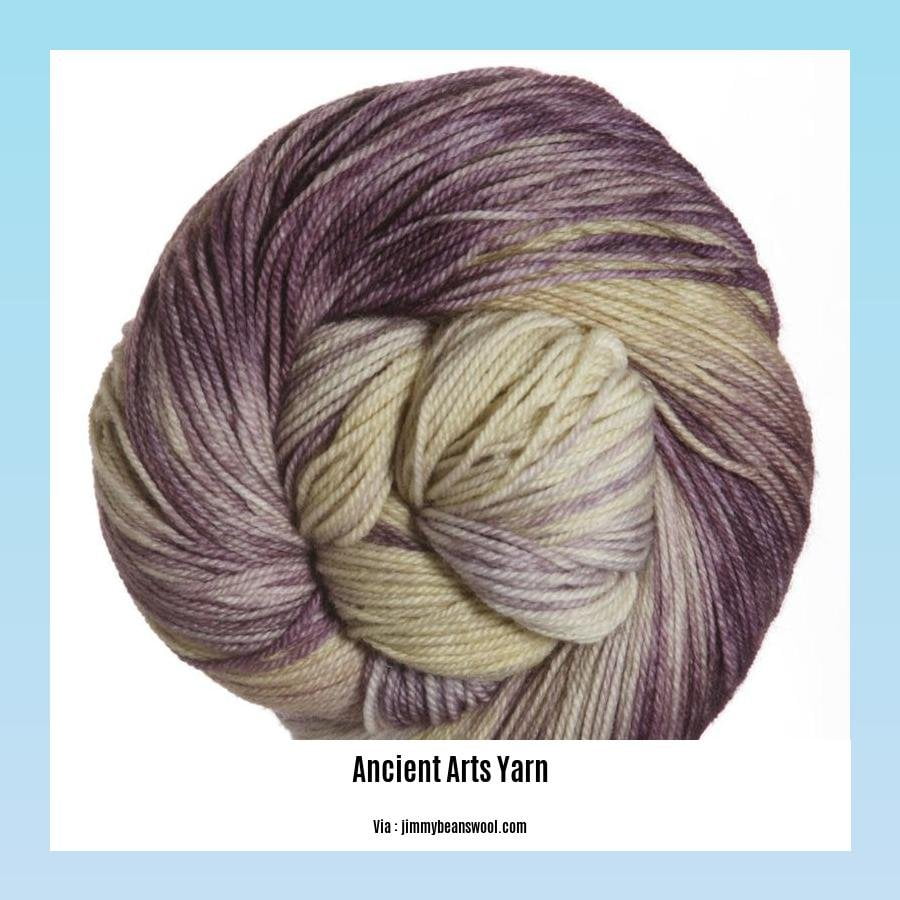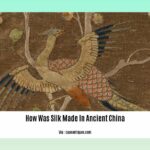In the realm of fiber arts, the allure of ancient arts yarn beckons those seeking connections to the past. Embark on a journey through time as we delve into the history and craftsmanship behind traditional textiles. From the spinning of raw fibers to the intricate techniques of weaving and knitting, discover the stories woven into each hand-spun thread and the skillful hands that bring them to life. [- Ancient Arts Yarn: Exploring the History and Craftsmanship of Traditional Textiles] unravels the secrets of ancient arts yarn, shedding light on its cultural significance, aesthetic beauty, and the enduring human spirit that gives it life.
Key Takeaways:
- Ancient Arts Yarns:
- Artisan hand-dye company inspired by nature, art, and storytelling.
-
Offers high-quality yarns for knitting, crochet, weaving, and other crafts.
-
Ethical Sourcing:
-
Ensures ethical sourcing and milling of base materials to promote sustainability and fair practices.
-
Premium Bases:
-
Exclusively uses premium bases spun specifically for them, guaranteeing the highest quality yarns.
-
Vibrant Colors:
-
Offers a vast selection of custom-spun bases and consciously dyed colors using Revival products.
-
Wide Range of Products:
-
Offers 15 designs of sweaters, shawls, hats, and accessories inspired by the North Sea Collection.
-
Customer Demand:
- Knitters, crocheters, and weavers seek the exceptional quality and unique designs of Ancient Arts Yarns.
Ancient Arts Yarn: Discover the Charm of Traditional Yarn Crafting

Understanding Ancient Arts Yarn:
Ancient arts yarn, a timeless art form passed down through generations, holds a unique place in the world of textiles. Rooted in traditional craftsmanship, these yarns carry stories of artistry, cultural heritage, and the enduring connection between humans and fibers. Whether you’re a seasoned artisan or just starting your textile adventure, let’s delve into the captivating world of ancient arts yarn.
The Essence of Ancient Arts Yarn:
-
Preserving Cultural Heritage: Ancient arts yarn is an invaluable link to our past, preserving traditional techniques and cultural expressions. Each skein of yarn carries a story, a reflection of the people who crafted it and the traditions they uphold.
-
Sustainable and Eco-Friendly: Many ancient arts yarns are made using natural fibers like wool, linen, and cotton, making them sustainable and eco-friendly choices for conscious crafters.
-
Tactile Experience: Working with ancient arts yarn offers a tactile experience like no other. The variations in texture, thickness, and color add a layer of depth and intrigue to your creations.
Techniques for Working with Ancient Arts Yarn:
-
Spinning: Transform raw fibers into yarns using a spinning wheel or spindle. This time-honored technique allows you to customize the thickness, texture, and color of your yarn.
-
Knitting: Create intricate fabrics using needles to loop and intertwine yarns. Knitting offers endless possibilities for patterns, textures, and garments.
-
Crocheting: Unleash your creativity with a crochet hook, forming beautiful fabrics through a series of loops and stitches. Crocheting allows for versatile projects like shawls, bags, and home décor.
-
Weaving: Interlace warp and weft yarns on a loom to create stunning textiles. Weaving techniques range from simple plain weaves to complex patterns like tapestry and brocade.
Benefits of Using Ancient Arts Yarn:
-
Uniqueness: Each skein of ancient arts yarn is unique, reflecting the hand of the artisan who crafted it. Your creations will stand out with their distinctive character.
-
Quality: Ancient arts yarns are often made using high-quality fibers and traditional methods, ensuring durability and longevity in your projects.
-
Personal Connection: Working with ancient arts yarn fosters a personal connection to the past and to the artisans who have come before you. It’s a way to honor traditions and express your creativity simultaneously.
Embrace the allure of ancient arts yarn and embark on a journey of exploration, creativity, and connection. Let these timeless yarns inspire your next textile masterpiece.
-
Are you interested in ancient history and want to learn more about the ancient Egyptian scale? Ancient Egyptian Scale
-
Encounter the fearsome Ancient Gold Dragon in Dungeons and Dragons 5e. Ancient Gold Dragon 5E
-
Looking to purchase genuine artifacts? Discover the legitimacy of Ancient Artifacts Shop. Ancient Artifacts Shop Legit
Spinning, Knitting, and Weaving Techniques for Ancient Arts Yarn

In the realm of fiber arts, ancient arts yarns hold a distinguished place, connecting us to the rich legacy of traditional textile crafts. Spinning, knitting, and weaving techniques, passed down through generations, unlock the timeless beauty of these remarkable yarns, allowing us to create exquisite handmade pieces imbued with history and craftsmanship.
Key Takeaways:
- Experience the fulfillment of transforming raw fibers into delicate yarn through the art of spinning.
- Embrace the rhythmic motion of knitting, creating intricate fabrics with the simple elegance of loops and needles.
- Discover the captivating world of weaving, interlacing warp and weft yarns to produce stunning textiles with depth and texture.
Spinning: A Journey from Fleece to Yarn
- Prepare Your Wool: Gently card or comb the wool fibers to align them, ensuring a smooth spinning process.
- Drafting and Twisting: Hold the fiber bundle in one hand and use the other to draft or pull out small sections while simultaneously twisting the fibers.
- Plying: Combine multiple singles (spun yarns) together to create a stronger and more balanced yarn, enhancing its durability and texture.
Knitting: A Symphony of Needles and Yarn
- Casting On: Create the foundation row of stitches onto your needles, setting the stage for your knitted fabric.
- Knit Stitch: Insert the right needle into the front loop of a stitch on the left needle, wrapping the yarn around the right needle, and pulling it through to create a new loop.
- Purl Stitch: Insert the right needle into the back loop of a stitch on the left needle, wrapping the yarn around the right needle, and pulling it through to create a new loop.
- Binding Off: Securely finish your knitted piece by casting off the stitches, preventing them from unraveling.
Weaving: An Interplay of Warp and Weft
- Warping the Loom: String the warp yarns (lengthwise threads) onto the loom, creating the foundation for your woven fabric.
- Threading the Shuttle: Wind the weft yarn (crosswise threads) onto a shuttle, preparing it to be woven through the warp yarns.
- Weaving: Pass the shuttle carrying the weft yarn through the warp yarns, alternating over and under to create the interlacing pattern of your fabric.
- Beating and Advancing: Use a beater or comb to push the weft yarn firmly against the previous row, creating a dense and even weave. Advance the warp yarns to prepare for the next pass of the weft yarn.
Embark on a creative journey with ancient arts yarns, unearthing the timeless charm of traditional techniques. Whether you choose to spin, knit, or weave, let these ancient crafts enrich your life with beauty and fulfillment.
Sources:
- History of the Spinning Wheel
- Spinning Yarns, Telling Tales about Textiles
Preserving Traditional Craftsmanship and Cultural Significance
Exploring the history and craftsmanship of ancient arts yarn is a captivating journey. In these remarkable yarns lies a legacy that connects us to the past. These yarns, spun with time-honored techniques, carry the stories of ancestors and the cultural tapestry of our heritage.
Key Takeaways:
-
Ancient arts yarn is a window into the past, showcasing traditional techniques, cultural practices, and artistic expressions.
-
Preserving traditional craftsmanship associated with ancient arts yarn safeguards this intangible cultural heritage, fostering a sense of continuity and identity.
-
Reviving and promoting ancient arts yarn supports local artisans and communities, promoting economic sustainability and preserving traditional knowledge.
-
Utilizing ancient arts yarn in contemporary designs and products blends the wisdom of the past with the aesthetics of the present.
-
The tangible nature of ancient arts yarn connects us to history in a tactile way, providing a unique and immersive experience.
**Ancient arts yarn is more than just a material; it’s a testament to the enduring human spirit and our innate desire to create. Through preserving traditional craftsmanship and cultural significance, we ensure that these ancient arts continue to inspire and enrich future generations.
Sources
Contemporary Applications and Inspiration in Modern Fiber Arts
In the realm of fiber arts, ancient arts yarn holds a unique place, connecting us to the rich tapestry of human history and craftsmanship. These yarns, spun from natural fibers using traditional techniques, carry stories of cultures, traditions, and artistic heritage.
Key Takeaways:
– Preserving Heritage: Ancient arts yarn keeps alive traditional techniques and cultural practices, promoting heritage preservation and cultural diversity.
-
Sustainability: Many ancient arts yarns are made from sustainable, eco-friendly materials, contributing to environmental stewardship.
-
Tactile Experience: Working with ancient arts yarn offers a distinctive tactile experience, fostering a connection with the natural world and the history of the craft.
-
Artistic Inspiration: The colors, textures, and unique qualities of ancient arts yarn inspire contemporary fiber artists to explore new design possibilities and push creative boundaries.
-
Storytelling: Ancient arts yarn weaves together stories of the past and present, enabling artists to communicate cultural narratives and personal experiences through their creations.
Beyond their intrinsic beauty and historical significance, ancient arts yarn finds contemporary applications across various artistic disciplines.
Fashion:
-
Design Innovation: Contemporary fashion designers are incorporating ancient arts yarns into their collections, creating garments that blend traditional techniques with modern aesthetics.
-
Cultural Expression: Fashion designers use ancient arts yarns to celebrate cultural heritage and explore identity, creating pieces that reflect diverse traditions and perspectives.
Home Decor:
-
Textile Art: Fiber artists utilize ancient arts yarns to create unique textile artworks, ranging from wall hangings to rugs, adding warmth and texture to living spaces.
-
Functional Decor: Homeware designers incorporate ancient arts yarns into functional items like cushions, throws, and table runners, merging practicality with artistry.
Accessories:
-
Jewelry and Adornments: Ancient arts yarns are transformed into intricate jewelry pieces, such as necklaces, earrings, and bracelets, showcasing the versatility of these fibers.
-
Fashion Accessories: Designers use ancient arts yarns to create scarves, hats, and bags, adding a touch of handmade charm to everyday accessories.
Embracing the Past, Inspiring the Future:
Ancient arts yarns serve as a tangible link between the past and present, preserving traditional techniques while inspiring contemporary artists to explore new creative avenues. Their unique qualities and cultural significance make them invaluable resources for fiber artists seeking to create meaningful and impactful works of art.
Sources:
-
Connecting the Past and Present: Ancient Arts Yarn in Modern Fiber Arts
-
The Role of Ancient Arts Yarn in Preserving Cultural Heritage
FAQ
Q1: What is the significance of ancient arts yarn?
A1: Ancient arts yarn represents a rich history and tradition of textile arts. It showcases the artistry and craftsmanship of ancient cultures, preserving intangible cultural heritage and offering a glimpse into the lifestyles and beliefs of past societies.
Q2: How does ancient arts yarn contribute to sustainability?
A2: The use of ancient arts yarn promotes sustainable practices. Many artisan hand-dye companies like Ancient Arts Yarns prioritize ethical sourcing and environmentally friendly dyeing techniques. By choosing yarns from such companies, consumers support sustainable production methods and contribute to the preservation of traditional crafts.
Q3: What are the unique qualities of ancient arts yarn?
A3: Ancient arts yarn offers unique qualities due to traditional spinning and dyeing techniques. Hand-spun yarns possess a distinct texture and character, while hand-dyed yarns exhibit vibrant and intricate color combinations. These qualities add depth and personality to textile projects, allowing artisans to create one-of-a-kind pieces.
Q4: What are some popular ancient arts yarn techniques?
A4: Various ancient arts yarn techniques have been passed down through generations. These include spinning wool using a drop spindle or spinning wheel, natural dyeing with plants and minerals, and weaving on a loom. Each technique contributes to the unique characteristics of ancient arts yarn, showcasing the diversity and richness of traditional textile crafts.
Q5: How can I incorporate ancient arts yarn into my textile projects?
A5: Incorporating ancient arts yarn into textile projects adds a touch of history and authenticity. You can use hand-spun or hand-dyed yarns for knitting, crochet, weaving, or embroidery. Experimenting with different techniques and combining ancient arts yarn with contemporary materials can lead to creative and visually appealing projects that celebrate the beauty and craftsmanship of traditional textiles.















